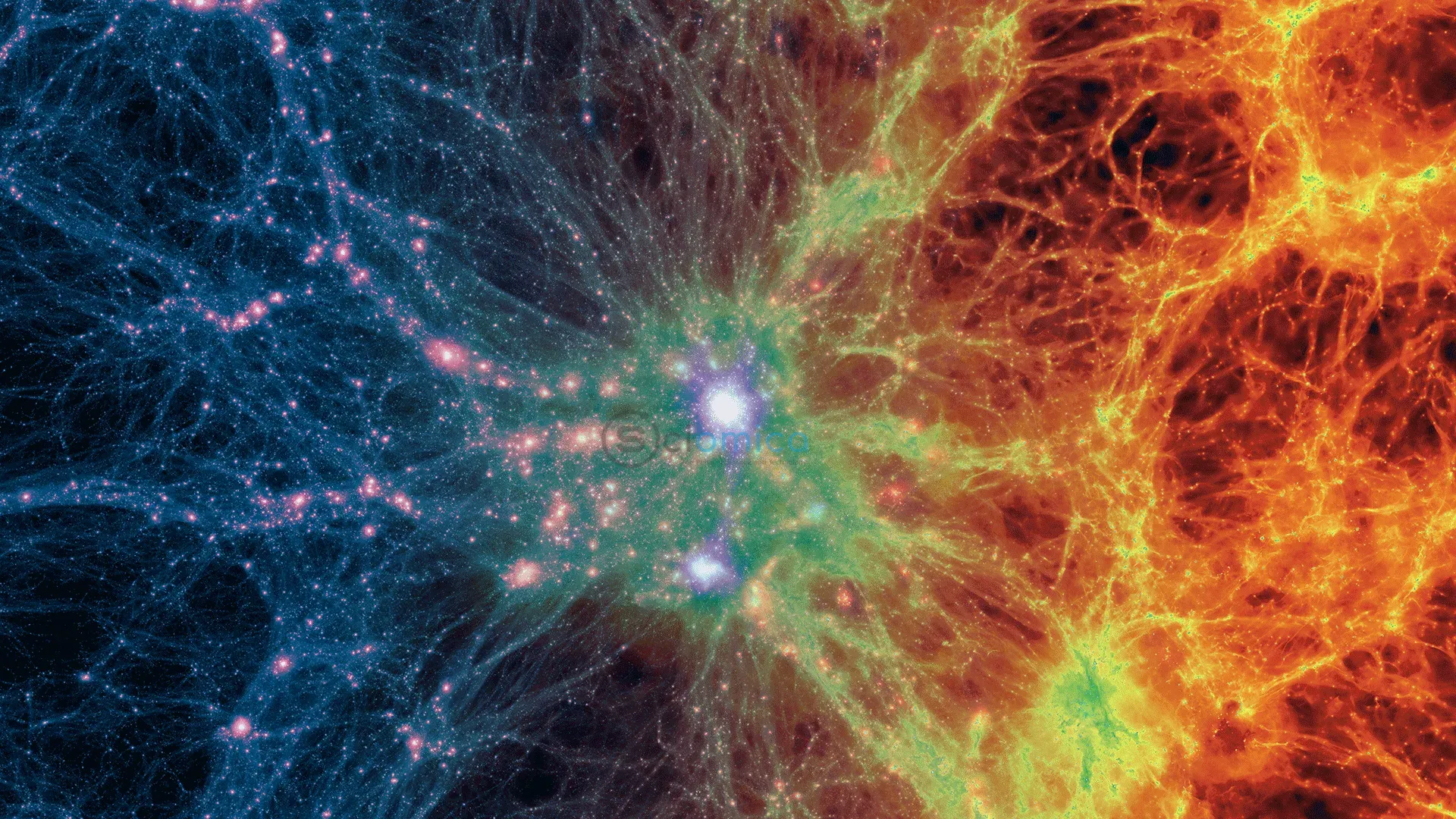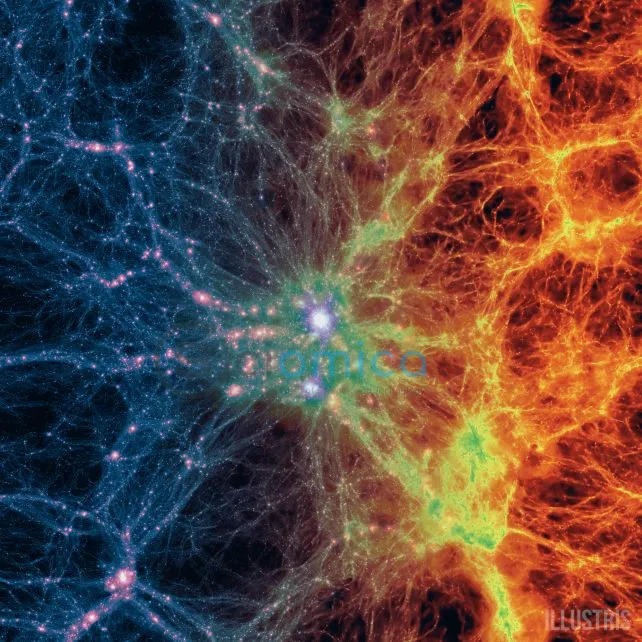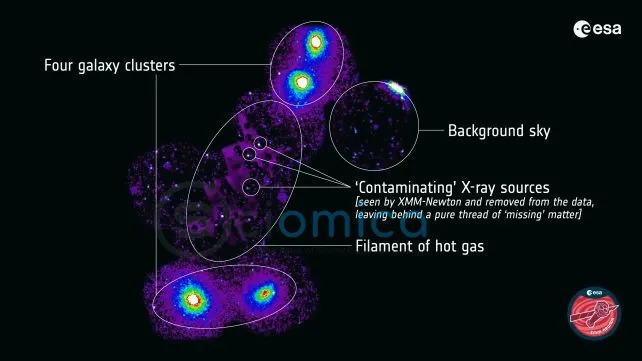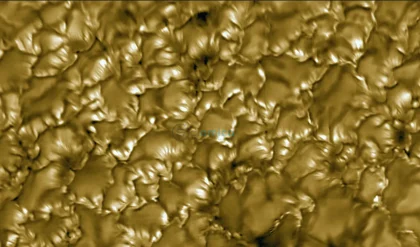
In a groundbreaking discovery, astronomers have unveiled critical new evidence regarding the elusive matter that has been missing from our understanding of the Universe. X-ray observations have uncovered a colossal filament of hot gas that stretches an astonishing 23 million light-years, residing in the space between four sub-clusters of galaxies within the immense Shapley Supercluster, which boasts around 8,000 galaxies.
Astrophysicist Konstantinos Migkas from Leiden Observatory in the Netherlands remarked, “For the first time, our results closely match what we see in our leading model of the cosmos – something that’s not happened before. It seems that the simulations were right all along.”

While most matter in the Universe is composed of a mysterious ‘dark’ variety that eludes direct detection, only about 15 percent is formed of more easily identifiable protons, neutrons, and electrons, often referred to as ‘normal matter’.
Current understandings suggest that scientists know precisely how much normal matter existed shortly after the Big Bang, thanks to measurements from the Cosmic Microwave Background radiation. However, a significant anomaly arises when scientists compare this initial estimate to observations of present-day matter. All detectable stars, black holes, galaxies, planets, dust, and gases only account for approximately half of the expected normal matter, presenting a perplexing dilemma about its whereabouts.

Scientists believe that this missing matter is dispersed throughout intergalactic space, existing in forms too diffuse to be observed directly, but suggested by increasing evidence of faint reservoirs over the past few years. This latest filament discovery adds to this body of evidence.
The cosmic web, comprising filaments of dark matter that link galaxies across vast expanses, acts as a “superhighway” facilitating the movement of galaxies and matter throughout the Universe. While these filaments are notoriously difficult to detect, Migkas and his team managed to identify one by utilizing data from two different X-ray telescopes.
Utilizing the retired Suzaku X-ray telescope, which is adept at capturing faint X-ray emissions across large areas, alongside the XMM-Newton telescope, known for its ability to detect bright point sources, the researchers successfully isolated the filament’s emissions and eliminated interference from other sources, such as black holes.

The filament, measuring 23 million light-years long, contains enough material to fill ten Milky Way galaxies and operates at a searing temperature exceeding 10 million degrees Celsius. Researchers have expressed that this discovery aligns perfectly with what would be expected of such filaments according to prevailing simulations of the Universe.
“This research is a great example of collaboration between telescopes, establishing a new benchmark for detecting light from faint cosmic web filaments,” said Norbert Schartel, astronomer and XMM-Newton project scientist at the European Space Agency. “More fundamentally, it reinforces our standard model of the cosmos and validates decades of simulations, suggesting that the ‘missing’ matter may indeed be lurking in these hard-to-detect threads across the Universe.”
Reference:
- K. Migkas, F. Pacaud, T. Tuominen, N. Aghanim. Detection of pure warm-hot intergalactic medium emission from a 7.2 Mpc long filament in the Shapley supercluster using X-ray spectroscopy. Astronomy & Astrophysics, 2025; 698: A270 DOI: 10.1051/0004-6361/202554944






